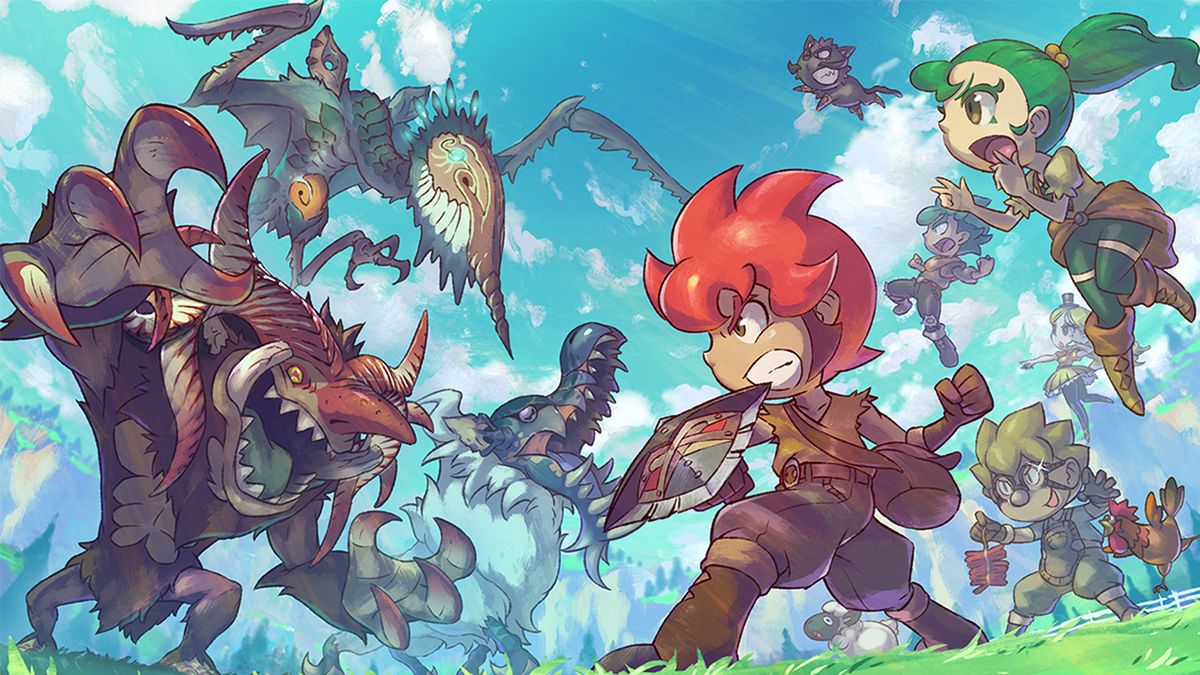Once you play Disgaea D2: A Brighter Darkness for several dozen hours, something strange happens: you begin viewing the game not in terms of everything it does right (which is a lot) and wrong, but in terms of what it does differently in an attempt to bring its blend of a quirky plot and deep customization to a new audience.
Despite its title, Disgaea D2: A Brighter Darkness is actually the fifth console installment in the long-running strategy RPG series that began with Disgaea: Hour of Darkness on PlayStation 2. It’s also the first proper installment to feature favorite characters Laharl, Etna, and Flonne in just over a decade, and with gorgeous high-definition visuals to boot (just look at all of those vibrant environments and sharp character portraits). Unfortunately, what likely was intended as a return to form feels somewhat underwhelming due to its abbreviated nature.

“…first proper installment to feature favorite characters Laharl, Etna, and Flonne.”
The tale picks up with the fallen angel Flonne tending to a flowerbed outside the Overlord’s castle, where she resides with Laharl and his vassal, Etna. As Flonne waters unresponsive seeds mail-ordered from the neighboring realm of Celestia, her boisterous friend crashes down on the scene and leaves a crater where once there was the promise of new life. He has been destroying stars in an attempt to showcase his strength (because saving the Netherworld apparently didn’t do that). From that explosive opener, the plot delves into its chosen themes–the importance of family and identity–while following Laharl and friends on a quest to fix a disturbance in the world. Characters deliver humorous lines with familiar conviction as they triumph over adversity, but the assorted plot strands rarely go anywhere important by the time the credits roll. Most characters from the previous title also don’t even make an appearance and are instead replaced by new arrivals who barely even register.
The stripped down story is in some ways a sign of things to come. Disgaea 4: A Promise Unforgotten introduced a variety of elements (including player-created maps and ship customization) that here are excised in favor of a decidedly more straightforward approach. Nippon Ichi Software’s development team has tried ambitious things with past titles and then later scaled them back (such as the grid system was abandoned in favor of a more organic but less precise approach with Phantom Brave and Makai Kingdom), but some players are bound to regret the sudden absence of that expanded content even though it keeps the focus on core gameplay elements.
Fortunately, new customization options make up for much of what was lost. It’s now possible to assign “Evilty” traits to any units that you create or reincarnate, and those attributes affect the flow of battle in some interesting ways. A character might gain improved stats as other units cast fire spells, or you could choose to assign stronger resistance to attacks of that particular element. You also need to keep in mind the effect that enemies might have in place, since it could determine what priority you place on which opponents and how their placement could dictate your winning strategy. It’s now much more difficult to simply power through everything with a single character who you have equipped with superior gear.

“…some players are bound to regret the sudden absence of that expanded content…”
Riding mounts, which gain new offensive abilities and can also save their riders from a single fatal attack by absorbing the damage, also adds a new layer of strategy. It’s one more way the game emphasizes the importance of making sure your units work as a team, and that they respond to enemy forces that may be doing the same. You’ll either need to spend time learning and appreciating combat’s expanded elements or you’ll have to invest time to grind enough that you can safely ignore them.
You’ll have the opportunity to make a lot of other choices as well, thanks to “cheat” sliders that can be manipulated back at the expanded home base in the event that the default settings don’t work for you. These adjustments determine the rate at which mana and experience points are awarded in combat, or they can even provide less advantageous perks (like not allowing you to cancel out a combat move if you think better of it). If that feels just a bit too cheap, there also are options such as the training dojo and the new Item Assembly that let you improve the pace at which your units advance, which works to much the same end while feeling less like a shortcut. If grinding starts to overly resemble a chore, it’s easy to find a quick fix and go back to building that perfect army.

“The end result is once again a compulsive SRPG fan’s dream come true..”
The Disgaea series was never a success merely because of its zany story and compelling protagonists. The bright visuals and crazy personality attract newcomers, certainly, but it’s the addictive character customization that keeps a lot of them coming back. Now that Laharl and friends have returned but are not entirely living up to their end of the bargain, it’s time for the character customization and combat to step into the spotlight, which is precisely what they do in Disgaea D2: A Brighter Darkness. The end result is once again a compulsive SRPG fan’s dream come true, perhaps to a greater extent than ever before. If you can accept lackluster narrative in exchange for a fresh excuse to lose hundreds of hours wandering the Netherworld, you won’t do better.
This game was reviewed on PS3.
 Game News Video Games Reviews & News
Game News Video Games Reviews & News



